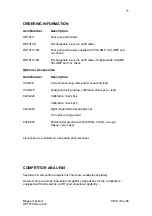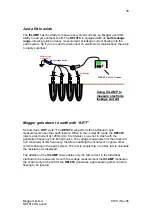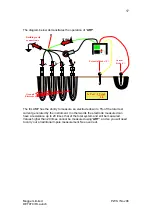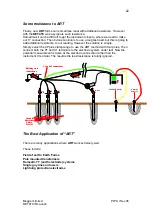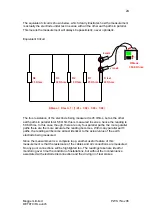
Megger Limited
PWS / Nov 06
DET4TC/R Launch
9
In this configuration, the injected test current I splits along two paths into I1 (flowing
into the connected earthing system) and I2 (flowing into the electrode under test, i.e.
I=I1+I2. The resistance of the electrode under test is calculated as R=V/I2 or R=V/(I-
I1). The current transducer (ICLAMP) measures I2 and feeds this value back to the
instrument.
Principle of operation (two-clamp stakeless resistance measurement)
In this example, the electrode under test is connected to a network of other
electrodes. It is either impractical or unsafe to disconnect an individual electrode for
testing. Also, there might be insufficient space to perform a classic three-terminal
resistance measurement. The stakeless test method using both VCLAMP and
ICLAMP can be used to obtain a measurement for the electrode under test.
A defined test voltage is injected into the system using the VCLAMP, inducing a
current, I, to flow and be measured by the ICLAMP. The model shown in Figure 8
can be simplified to the resistance of the electrode under test, Rx and the resistance
of the other electrodes in parallel, i.e. R1 || R2 || … || Rn. Therefore, the current
induced by the test voltage is I=V/[Rx+(R1 || R2 || … || Rn)]. It follows that as the
resistance of the other electrodes in parallel approaches zero, then the resistance
measured, approaches the value of the electrode under test.











